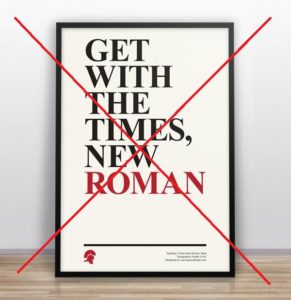 Editor’s Note: This article by Brad Murray was originally posted here. I loved it so much that I asked to repost it on Stuffer Shack. Thanks, Brad!
Editor’s Note: This article by Brad Murray was originally posted here. I loved it so much that I asked to repost it on Stuffer Shack. Thanks, Brad!
+Cam Banks got me thinking about layout and thinking about it from my usual location, 10,000 meters above looking down. So I think there are three things layout serves and hitting any one of them is probably enough to be good layout. To qualify as great layout, I think it needs to hit all three. And let’s take legibility as given — if the layout makes the text hard to read, nothing saves it — it goes in the bin. Rule zero is: the layout serves the text.
Marketing: I put this first because however crass it feels to think about marketing, visually stunning layout is primarily in service of marketing, and if a book doesn’t get from shelf to till, it failed. Doesn’t matter how great a game is if no one plays it – and if no one buys it, no one plays it. So how do we best serve this master? Let’s take it in stages.
The first impact of the book in most stores is, sadly, the spine. Few stores can afford to display cover first. So this is the least considered and arguably most important (since first) contact with the potential buyer. Here is where you get weird synergies with other parts of book development — a 1000 page book takes up more space on shelf spine-out and gives you more space to play with in design. The spine needs to stand out from the other books. High contrast, an eye-catching type-face, a well-known (or stunning) logo, an unusual book height (on a shelf of 6×9 books, a 9.5 inch high book has a significant advantage), are all things that can be leveraged. So, good layout in service to marketing puts special attention into the spine.
Next is the cover. The cover primarily delivers an emotion for role-playing games since what we’re going to wind up doing is turning the handle on this machine (the game) to get a target feeling(s) out of it. So that front cover needs to deliver the feels. Glory through violence? Sneakiness? Fear? Lust? Nostalgia? A bad cover doesn’t know what the game is trying to deliver. It’s usually a group of adventurers looking out at you from a posed group photo. Conan atop a heap of fallen foes slashing out with his scimitar to fell the second-to-last enemy tells me way way way more.
Then the back cover. The prospective buyer is probably going to turn it over hoping for a blurb about the game. This is the textual equivalent to the front cover: explain what this machine makes. Layout’s job is mostly to activate the text here. Wash out the background in a text box if it’s noisy. Keep the theme but amplify the text. It’s doing the selling now.
Then we get into the book. By now you may already have made the sale, but if not, this flip-through (not a read) is the last chance. Good art, consistency, clarity, smart use of white-space, and cleverness pay off here. Later, your cleverness is not so important, but here in marketing it is.
Teaching: The next master you serve is the first major purpose of the book: teaching a player how to operate this machine. Once purchased, this is your first opportunity to generate more sales — when this is done well, the first read from a new owner is fun and not frustrating. They finish feeling excited about running the game. This is a place that is not very well examined with layout, in my opinion, and so all I can say is lean in, layout artists. Think about this. How can your organization of visual material serve this objective? The text may already be well-organized with this objective in mind, in which case your job is easier: facilitate the textual choices. If the text has not considered this objective, you can still help.
Reference: The most important function of the book (as a tool for play — as a way to generate sales I’m not sure how important it is) is how the book gets used in play. It will speak to replay. Now the book is being used as a reference. None of the special tools in there to teach the game are interesting. Instead you need to support helping the owner of the book teach the game to others and making the job of finding a half-remembered rule easier. You will be thinking about landmarking critical pages and adding visual cues for section start points. When a player says “I grapple it” and no one remembers the grappling rules, your job well-done means the grappling rules are right at hand. Flip to that awesome wrestling pic, or that memorable sidebar, or recall it’s at the end of the red-edged-pages section.
Note how often we are supporting or even supplanting the functions of the text. Only before we open the book are we irrelevant to the text. And even then, only for two-thirds of that. Everywhere else, layout is in the same line of work as the text: part of the machine that generates play. In its simplest most subtle form, layout is the lubricant. In more ambitious layout, it is also part of the clockwork.

I haven’t gotten started on formatting yet, but these are definitely some nice things to keep in mind. Thanks for the advice, nice article!